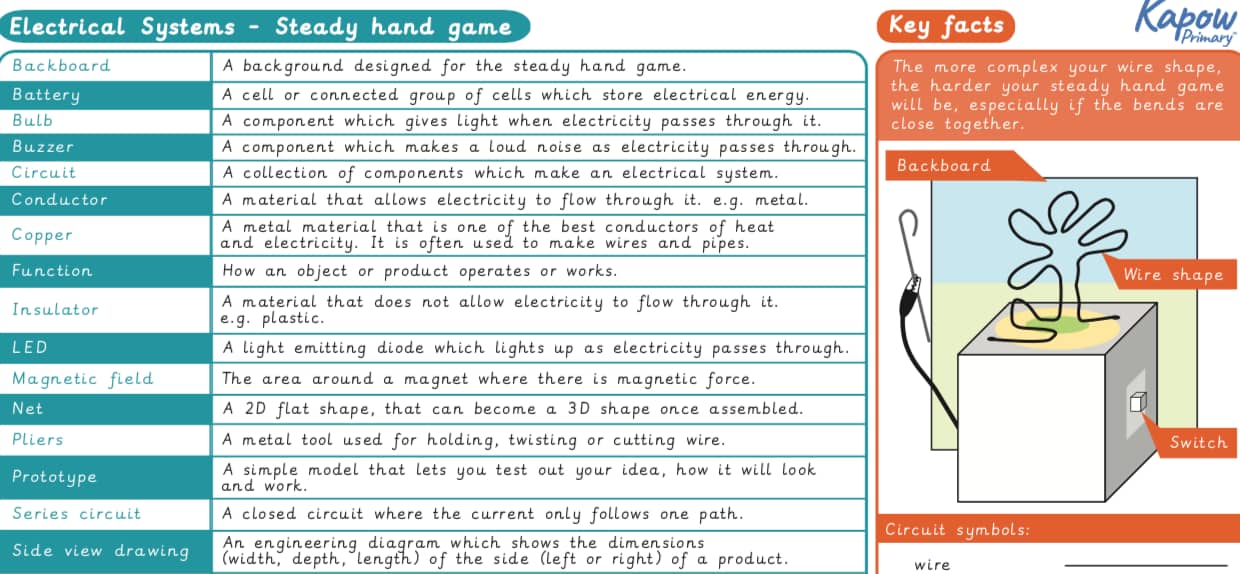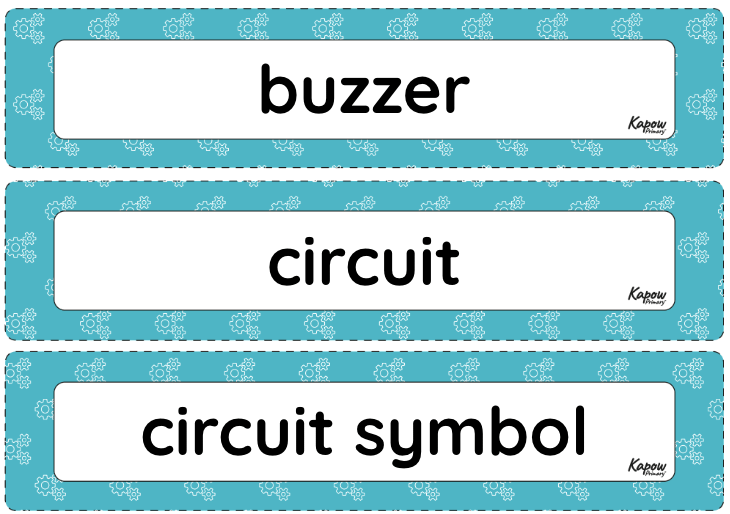Electrical systems: Steady hand game
This unit hub can be used to inform your medium term plan and to navigate to related resources.
The Curriculum and Assessment Review final report has been released. We’re reviewing the recommendations and planning for future updates. Learn more
- Subjects >
- Design and technology >
- Key stage 2 >
- Year 6 >
-
Electrical systems: Steady hand game
Unit outcomes
Pupils who are secure will be able to:
- Explain simply what is meant by ‘form’ (the shape of a product) and ‘function’ (how a product works).
- State what they like or dislike about an existing children’s toy and why.
- Learn about skills developed through play and apply this knowledge in a survey of one or more children’s toys.
- Identify the components of a steady hand game.
- Design a steady hand game of their own according to their design criteria, using four different perspective drawings.
- Create a secure base for their game, with neat edges, that relates to their design.
- Make and test a functioning circuit and assemble it within a case.
Suggested prior learning
Electrical systems: Doodlers
Get startedLesson plans
Lesson 1: Developing through play
- To research and analyse a range of children’s toys.
Lesson 2: Game plan
- To design a steady hand game.
Lesson 3: Base building
- To construct a stable base.
Lesson 4: Electronics and assembly
- To assemble electronics and complete their electronic game.
Key skills
Key knowledge
Related content
Unit resources

Knowledge organiser – DT Y6: Steady hand game
Aimed at pupils, a single page which gives key facts and definitions from the unit 'Electrical systems: Steady hand game.'

Vocabulary display – D&T Y6: Electrical systems: Steady hand game
A display version of the vocabulary from the unit 'Steady hand game'.
Cross-curricular opportunities
Computing
‘Pupils should be taught to:
- use search technologies effectively, appreciate how results are selected and ranked, and be discerning in evaluating digital content’
See National curriculum - Computing key stages 1 to 2.
Science
‘Pupils should be taught to:
- compare and give reasons for variations in how components function, including the brightness of bulbs, the loudness of buzzers and the on/off position of switches
- use recognised symbols when representing a simple circuit in a diagram’
See National curriculum - Science key stages 1 to 2.
Mathematics
‘Pupils should be taught to:
- recognise, describe and build simple 3-D shapes, including making nets’
Build on the learning
Mechanical systems: Automata toys
Pupils build on their understanding of form and function from evaluating their steady hand game to create a functional automata toy with moving parts.

